As I prepare for some fall exhibitions (Diving In and Westward Bound II), I ponder how similar my approach to ideation and creation of both book works and of exhibitions is. Both are lengthy and complex processes with side roads heading off in unexpected directions encountered along the way. I’m writing this post to provide a bit of backstory for a limited edition artists’ book I produced in 2020 – Evanesco: a selection of beleagured frogs. Ready? – here we go!
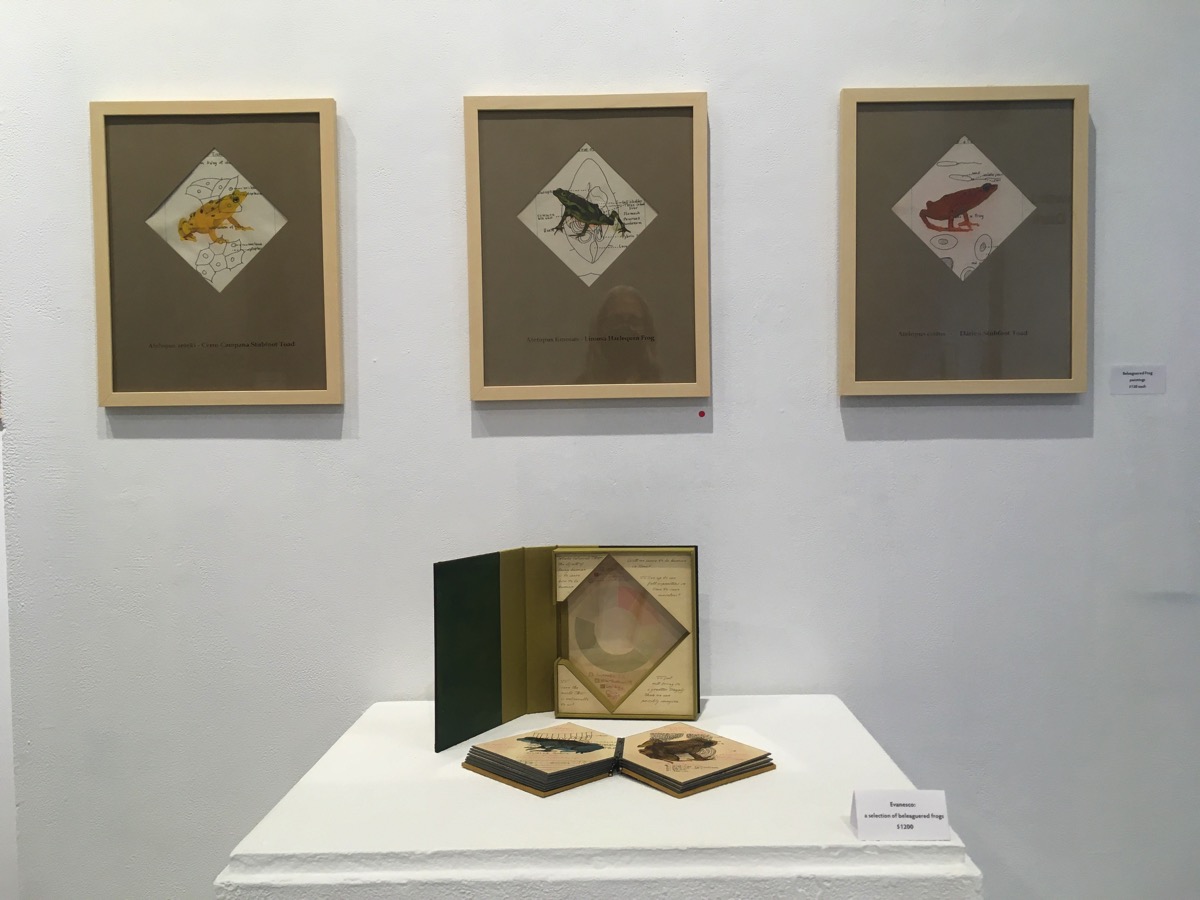
Although not a hard core wordsmith, I maintain an evolving word stash of favorite words and phrases (many somewhat archaic); words I admire for their aesthetic appeal in written form, that possess arrangement of consonants and vowels that is compact and efficient, making them easy to correctly pronounce, and that have an interesting origin and meaning. Evanesco is such a word.
I first encountered evanesco while researching frogs from the IUCN Red List of Threatened Species.

Craugastor evanesco – Vanishing Robber Frog.
The word may be familiar to Harry Potter fans as it is the name of the Vanishing Spell. It’s now on my list of favorite words and I used it as title for both a limited edition book work and 2021 solo exhibition.

In 1920 my great aunt, Ruth Wheeler, was taking biology classes at the University of Kansas. Her drawings and notes were recorded in standard lab notebooks with pale blue covers, three holes punched along the left margin, each page with a printed pale blue margin. These were turned in, evaluated, returned to the students and, in the case of my aunt, saved in boxes, most likely seldom referred to or forgotten, until I came along and carried them back to my studio (with Ruth’s blessing) to join the manyl other boxes that form an archive of her life and work.
Some of the biology notebooks pages were used as prompts for collaboration when I was working with Spondere, but most of them remained quietly in my studio … waiting.
With it being 100 years later, 2020 seemed a good time to figure out a way to use more of these drawings. 2020 was an anxious time for many of us; for me things like doodling, coloring, tracing and so forth were useful tools to control anxiety. I camped quite a bit in summer of 2020, always accompanied by a box of various in progress projects, so I added the notebooks and a gel ink pen and began over inking the faint pencil marks of Ruth’s notes and drawings of frog dissections.
Back in the studio, I decided to paint some frogs over the biology pages using some images from books but mostly from the IUCN Red List of Endangered Species as visual source material. Still not sure where this was going, but suspecting it was going somewhere interesting, I treated all the biology pages with diluted PVA, which provides a lovely, transparent ground for ovepainting with oil. I selected 17 species of frogs from the Red List (based almost entirely on their looks) and spent many hours staving off anxiety by painting images of frogs.
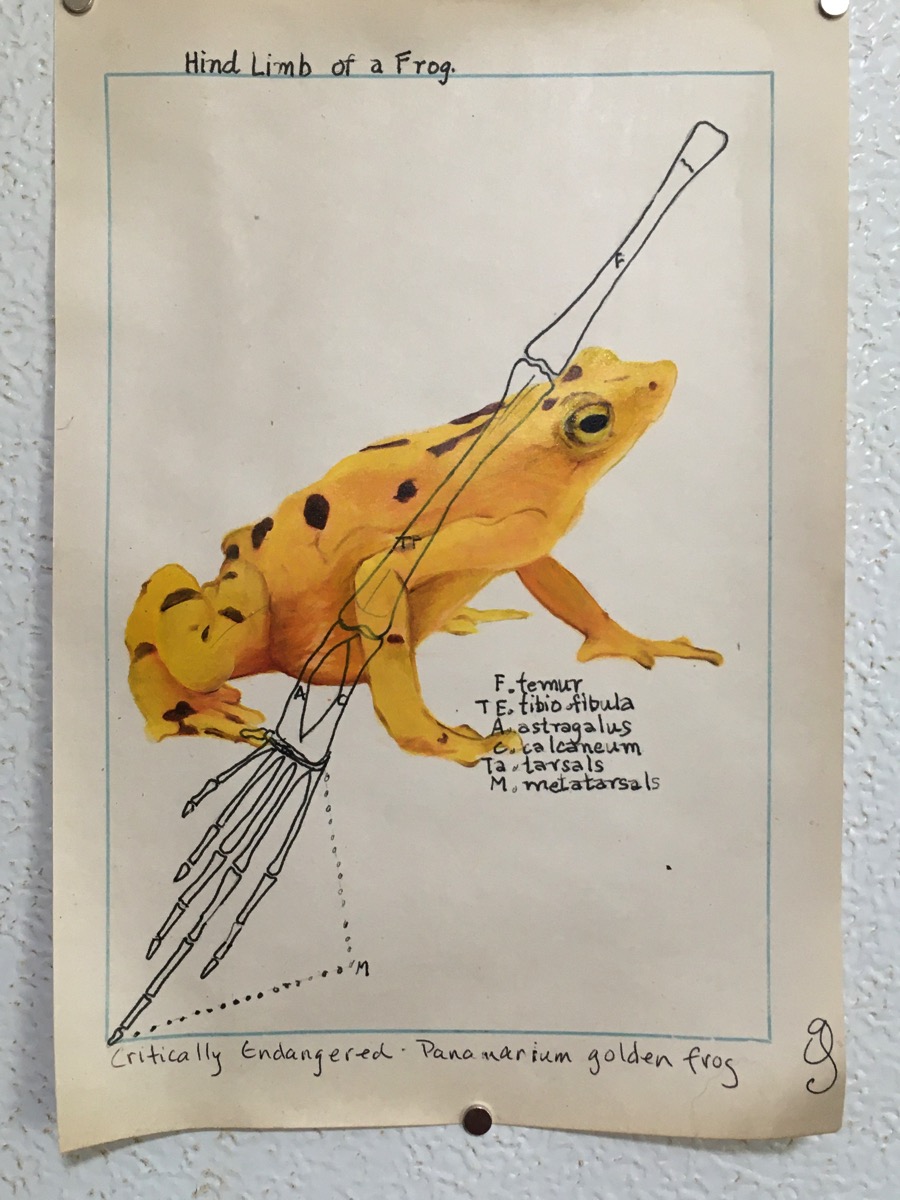
I further developed the idea of presenting these frogs, with details of their endangered state, in book form. I made a few models then settled on a wire-edge binding variation of rigid pages, diamond shaped with one side lopped off. The result is a book that, although very sturdy, is somewhat precarious when displayed open and upright.
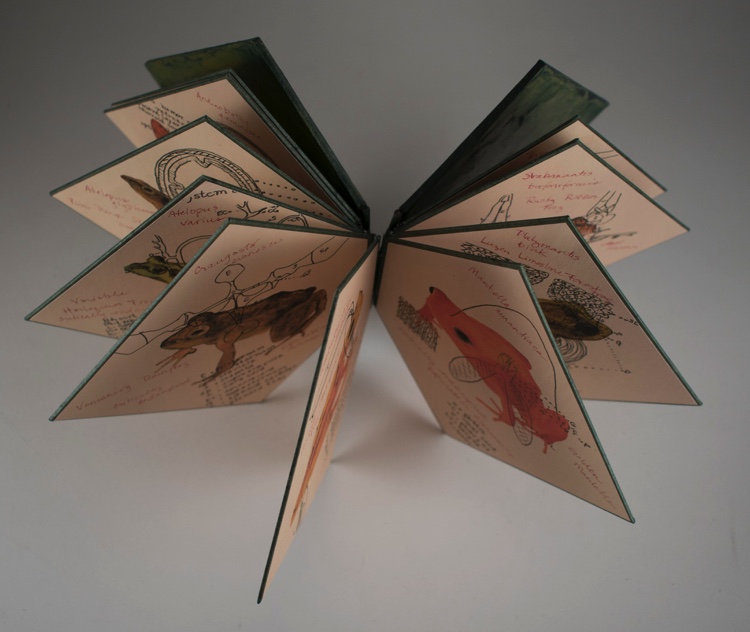
The images were scanned, then printed on hand-dyed Mohawk superfine text with archival inks on a Canon Pixma.
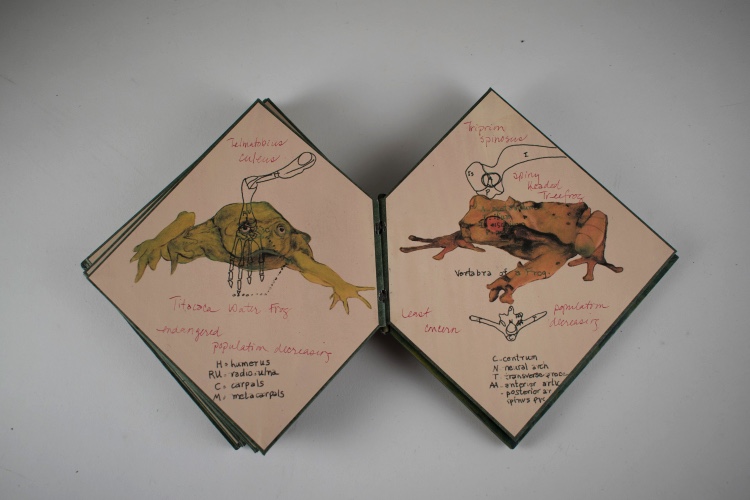
I included information about the distressing state of the many species of frogs that are listed on the Red List as endangered via handwriting in red ink the common name and Latin name of each species, along with its Red List status and population status (increasing/decreasing or stable). I also included a bar graph and pie chart that indicate the reasons for widespread extinction and endangered status of frogs worldwide. A summary of my own feelings about all this is summed up with words that appear on the corner blocks that hold the book in place in the box tray:
Blake believed that the object of being human is to learn how to be human. Will we learn to be human in time? To live up to our full capacities in time to save ourselves? To save the world that is vulnerable to us? To fail will bring on a greater tragedy than we can possibly imagine.
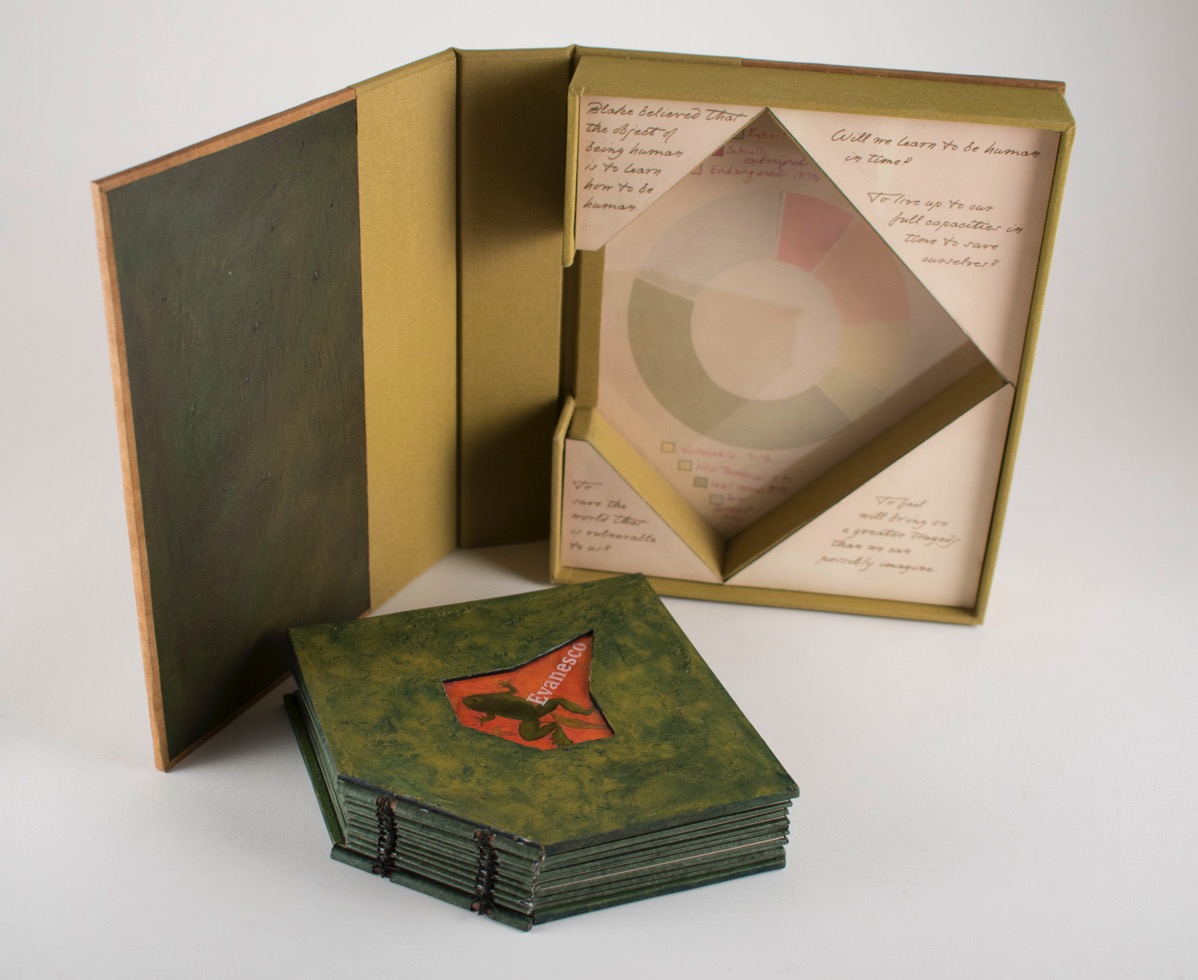
I really enjoy painting on surface treated paper so I decided to hand paint labels for each of the 9 copies, plus labels for the spine and front cover of the drop spine box I designed to house the book. The covers of both the book and box are created using multiple layer of shellaced book board that is textured with acrylic modeling paste, painted with acrylic and finished with top coat of pigment mixed with cold wax medium, buffed to a soft sheen. I couldn’t find any book cloth of the right color so I airbrushed dilute acrylic onto some tan, paper backed Verona book cloth.
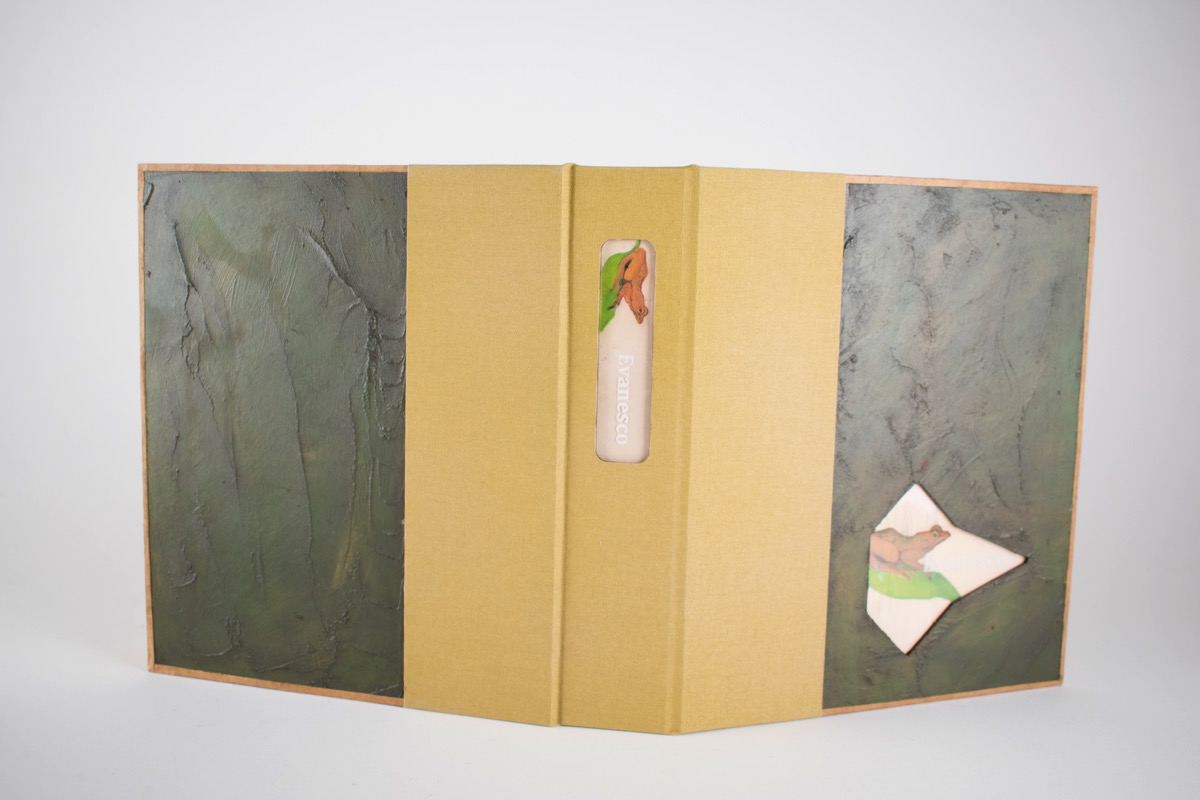
Postscript
A copy of Evanesco: a selection of beleagured frogs was purchased by the British Library in 2022 and included in the 2023 Animals in Art exhibition and catalog at the British Library. The catalog entry, shown below, closes with this:
The dissemination of scientific knowledge can follow many routes. The success of Evanesco lies in its ability to distill current data into a visually engaging form that uses art to deliver its message. Though on the surface Evanesco can be seen as a sombre book, it also brings with it an element of hope by helping to raise awareness of the conservation issues faced by this group of animals. Every opportunity to bring these concerns to light is a positive step and, over time, could help these species recover.
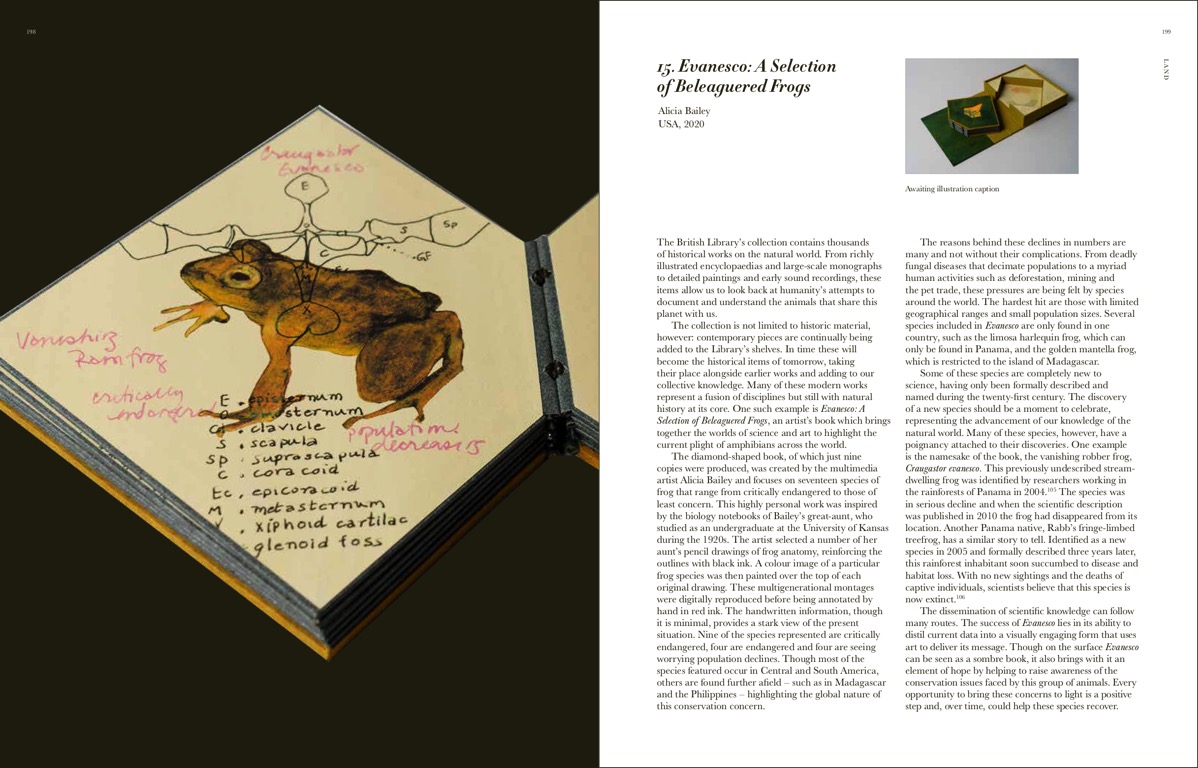
Evanesco was also awarded the certificate of artistic excellence by the Puget Sound Book Artists and is held by University of Denver Special Collections, Colorado State University Special Collections, Emory University Special Collections.
Want to learn more about my studio work?
If you haven’t already, subscribe to my newsletter for occasional updates about my work in the studio. As well, please share this post if you know others who might enjoy it.
 This piece is available.
This piece is available. 



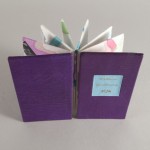
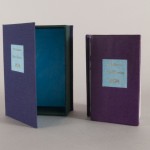
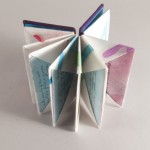









 . I love this picture of me watching a snapping turtle in my aunt’s back yard.
. I love this picture of me watching a snapping turtle in my aunt’s back yard.














 the pages were lasercut
the pages were lasercut


































